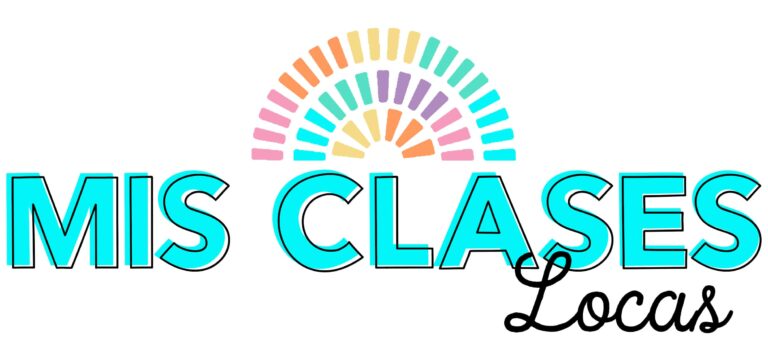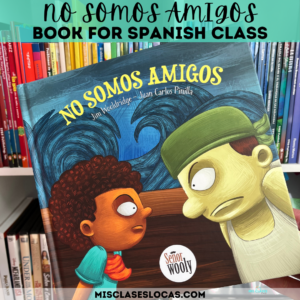The second quarter novel for Spanish III this year is the novel Problemas en Paraíso by Carol Gaab. This is my first time using this novel as a whole class novel, but I have used it as a part of literature circles. I previously blogged about planning for the novel. While planning, even though I have the official teacher’s guide, it is one of the old ones, that is very basic without all of the great cultural expansions and ideas of the new guides. Since I have taught quite a few novels now, I have my “go to” activities that can be used with any novel. (I currently have 72 posts with the label novel if you need ideas).

Chapter 1
To make sure everyone had a solid start, I read the first chapter to the class, discussing as we went.
Predictions
To practice our future tense students wrote predictions for the rest of the novel. We reviewed our two ways to talk about the future first. Students turned these predictions into me. I read the predictions (correctly) and we discussed who agreed and disagreed with each. Hopefully I will remember to revisit these at the end of the book to see how they did.
Chapter 2
Quizlet Vocab
We used this Quizlet to introduce/review main vocabulary from the novel. This could be used at any point, but this particular day we needed something to mix it up to start class after FVR.
Students read alone and then we discussed as a class.
Ixtapa, Mexico
Since they arrive in Mexico, I projected Google Maps of Ixtapa and we watched a couple videos so students could see this beautiful resort area. Qué hacer en Ixtapa.
Chapter 3
Students read on their own or with partners and we discussed as a class.
Students completed this fun matching activity from Martina Bex
Chapter 4
We listened to the audio book of chapter 4 as a class to mix it up.
Glyph
To review chapter 1-4, students completed a glyph create by mi amiga Emily Huff. Students colored picture based on if a statement was true or false.
To review on Monday, we played the marker game. It is one of my go to games and all you need is a list of true/false statements.
Chapter 5
Order of Events
Students used a manipulative of main events in the chapter to put it in order. They then retold it to their partner.
Chapter 6
Freeze Frame
We completed this freeze frame over chapters 1-6 also from Emily Huff. You can find more about freeze frame here.
Chapter 7
Sub day
I was at my son’s Christmas program, so students read and completed activities from the chapter alone or with partners. To make it easy on myself for sub plans, students read the chapter and completed a two sided worksheet from the teachers guide with three column notes and comprehension questions. #HighlightREAL It is not always fancy with novels and you have to give yourself grace and sometimes just do what work for you.
Chapter 8
Walk & Create a Sentence
I found a new activity in the teacher’s guide that I had not used before. A bunch of key vocab words are on small cards. Students walk around and show other students their card. The other student must make a sentence using the word.
Running Dictation
Another go to activity to do once during a novel is running dictation, which I learned about from Martina Bex. I know there are many variations, but in mine there are sentences in the hallway in Spanish. In groups of 3-4 students take turns being the runner, writer, artist & optional cheerleader/editor. They work together to retell the chapter on 1/4 sheets of scratch computer paper. These are then used to retell the chapter. Here is our Running Dictation for Ch8.
Chapter 9 &10
By this point in the book the students just want to finish it and find out what happened. The plan for tomorrow is to let the students finish the book, either reading alone or with a partner. We will then discuss it as a class. Before we read, they might do this Quizlet Live with vocab from the last two chapters. They will then have some time to prepare for assessments. They will be having both a presentational writing and interpersonal speaking.
Assessments
Students will answer a few writing prompts in class in Spanish on paper. The study guide is posted on Classroom, so they can write rough drafts and practice in advance.
For interpersonal speaking, students are to come to class with questions to ask. I have not decided if they will talk in simultaneous small groups, in random pairs at my desk, or do a fishbowl interpersonal speaking.
Other Novel resources you may enjoy
For the rest of 2017, get ready for my annual “best of” posts!





